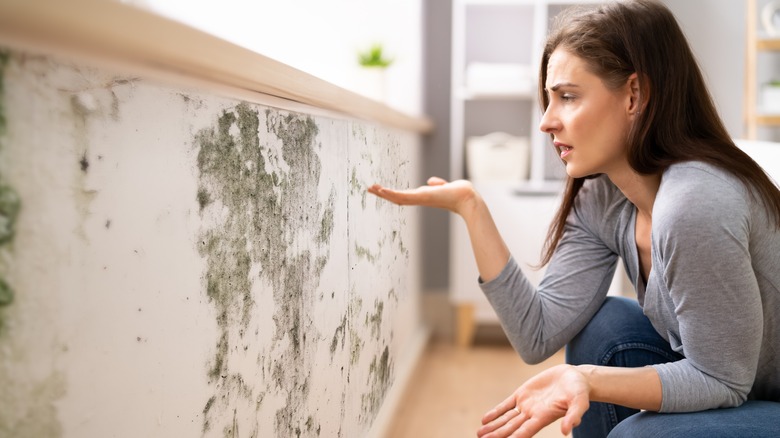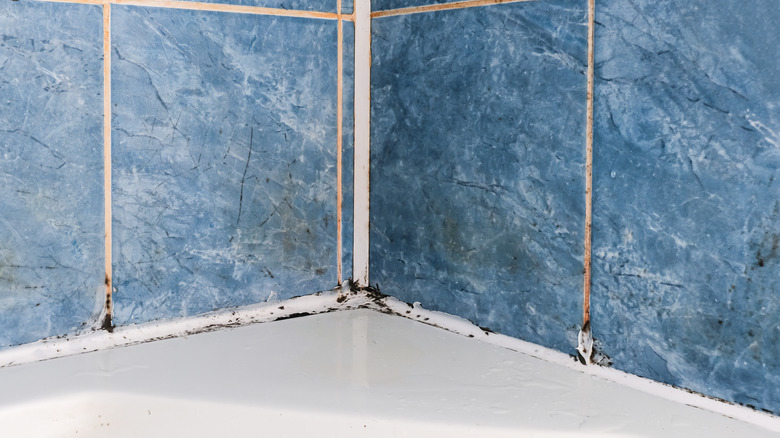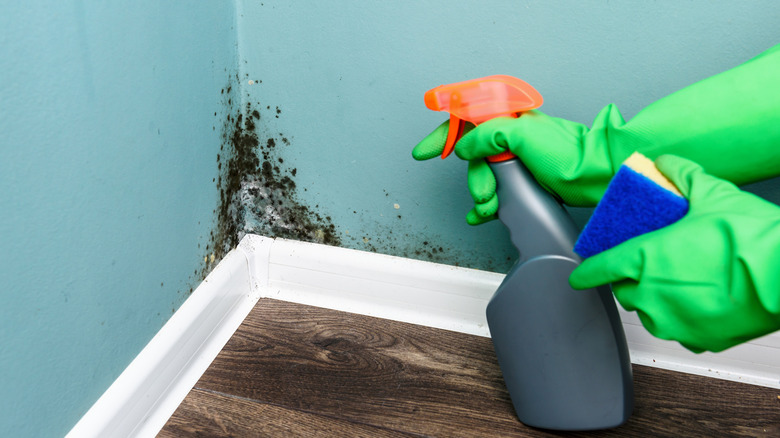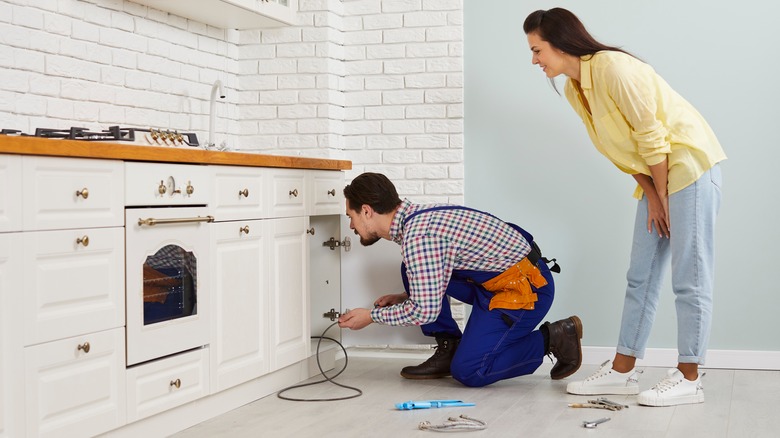How To Identify Mold In Your Home And Get Rid Of It For Good, According To An Expert
As you're cleaning out a cabinet under the sink or perhaps pulling a couch away from its spot under a window, you find a black substance on the surface of the wall. You're instantly worried about what it could be, and rightfully so. Mold is a very common problem in homes and is often found in areas near roofs, windows, and pipes, especially if a leak has developed, according to the Centers for Disease Control and Prevention. Mold is worrisome as it can impact our respiratory health with symptoms that include itchy eyes, trouble breathing, and allergic reactions in some people.
Even if you do a great job of keeping your home clean and paying attention to humidity levels, mold can still form. How do you know if what's under your sink is something to worry about or just something that requires a quick cleanup? Dallas Nevill, the owner of Rainbow Restoration of Southwest Mesa, a Neighborly company, shares insights into how to identify mold and remove it for good in an exclusive interview with House Digest.
Why mold can be difficult to identify
You don't want to immediately assume that every black substance or discoloration is mold, but do take a closer look to figure out what's really going on. Dallas Nevill shares, "Molds are [some] of the most plentiful fungi. This is because they're difficult to control. Mold produces tens of thousands of spores, which are easy to spread and invisible to the naked eye." If you're scratching your head wondering how this could happen in your home, understand that mold is not always recognizable.
"Some mold in the home is easy to spot, such as in the shower growing on the grout. But sometimes, mold can be more difficult to identify," reveals Nevill. "If mold growth is small or hidden, it might look like harmless dirt on the wall." It's a good idea to treat these areas as if they are harmful even if you're not sure. Getting rid of mold now will minimize the risk of it growing unchecked for a long time, endangering the health of your family.
How to get rid of mold
Mold is a living organism, so it needs to be handled properly to eliminate it thoroughly. Nevill shares some basic initial steps to clean mold effectively. "Homeowners can use a mold or mildew remover or use a mix of vinegar or bleach, but this will only be able to clean the surface and not the source of the problem." The underlying problem is often hard to treat well enough to eliminate the risk of it coming back. Prying away walls and exposing wet areas could provide some insight into the cause, but that may be an unnecessary expense you don't want to worry about right now.
It's common for people to think that wiping away what they see is enough, or that removing wet surfaces and sanitizing them is a permanent solution. Yet, that's rarely adequate in eliminating the long-term risk of mold growth that's been hidden from sight. "Depending on the level of mold damage and the areas of the home impacted, a professional mold remediation and removal [service] is the safest and most effective option," shares Nevill. In the long run, this may be your best course of action.
Why calling a professional is the best option
For some property owners, the thought of calling in a professional to investigate the presence of mold seems excessive, and it may be something they push off. That can end up being a big and costly mistake, sometimes allowing the infestation to grow hidden behind walls and carpets for an extended period of time. Dallas Nevill explains, "Mold remediation specialists can locate hidden water intrusion... [which] allows them to see what may be causing or contributing to the indoor mold growth."
An average home offers plenty of places for the fungi to flourish. "There are some obvious sources of moisture, like leaking pipes, plus more subtle sources of mold-producing moisture, like condensation in HVAC systems and ductwork," says Nevill. Even for the handy among us, it's not always possible to see deep into the home's structure to spot the underlying problem. "These areas may be hard to locate for the DIY homeowner, but mold remediation specialists have the proper tools to safely find and identify all types of molds," he assures. That could be the only way to ensure your loved ones don't suffer from respiratory illness brought on by mold, especially as it travels through the HVAC ductwork from a leaky bathroom cabinet to their bedrooms.



